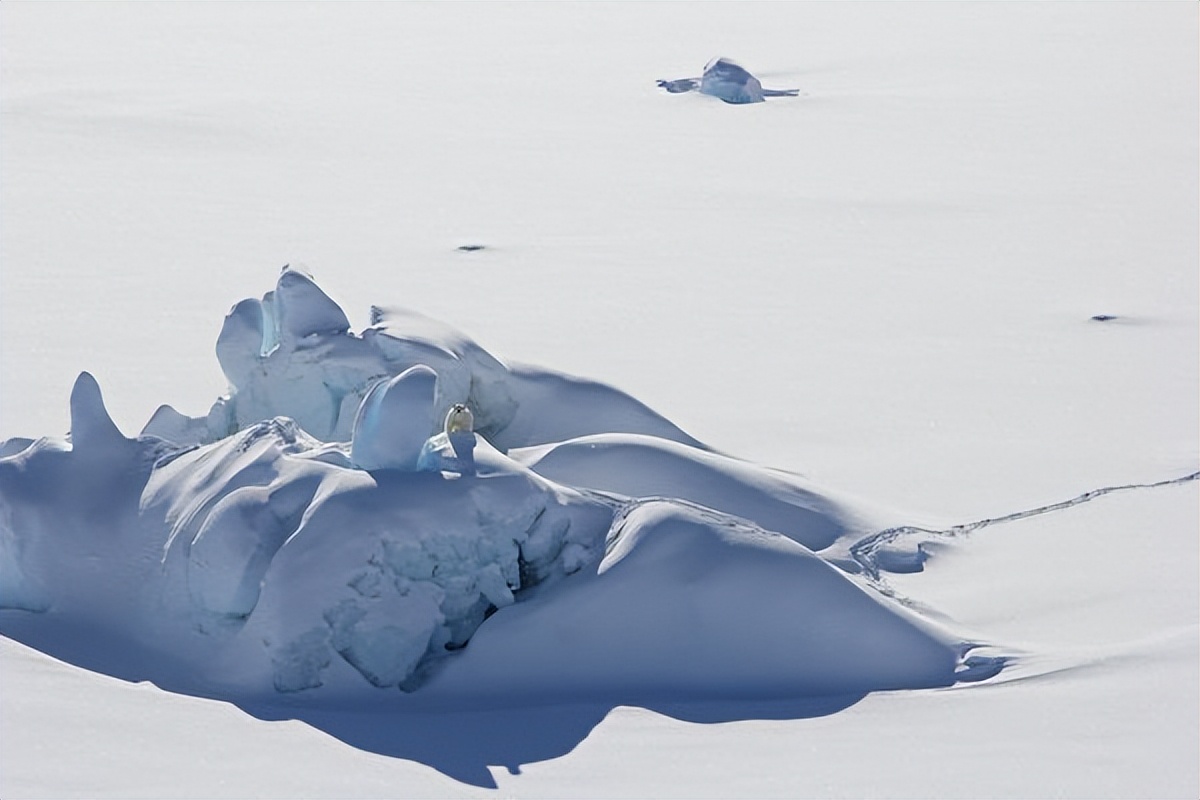
Scientists have discovered a genetically unique group of polar bears in remote southeastern Greenland that can survive in a sea ice-free environment. A polar bear stands on a snow-covered iceberg in southeastern Greenland in March 2016. (AFP/Kristin Laidre/University of Washington)
A recent study suggests that scientists have identified an isolated subpopulation of polar bears near remote Greenland that is relatively small and requires no sea ice to hunt, suggesting that the subspecies may offer new hope for precarious polar bears.
Polar bears are known to rely on intact, solid sea ice as a hunting platform. However, scientists have spotted a genetically unique group of polar bears in southeastern Greenland that use scattered freshwater ice (or mixtures of snow and ice) from glaciers as a platform to ambush seals, and are smaller, making this small group of only a few hundred polar bears a new subpopulation.
This herd of polar bears lives in a fjord in southeastern Greenland, an area that seems unsuitable for polar bears. Greenland is surrounded by mountains and ice sheets in the west and the ocean in the east. Because the area is so far south, sea ice only covers about 100 days a year. Sea ice is scarce for most of the year, but polar bears here seem to have adapted to the environment.
Kristin Laidre, a polar scientist at the University of Washington and lead author of the study, said: "Previously, we only knew from historical records and indigenous hunters that there were bears in the area, but we didn't know how special they really were. ”
Due to the lack of genetic data, scientists have been classifying it as a subspecies with polar bears in northeastern Greenland, one of 19 currently known populations of polar bears. This time, through the analysis of genetic samples, the researchers overturned their previous conclusions and found that their genes were special and isolated from other groups on the east coast of Greenland for at least 200 years.
"Genetically, they are the most isolated population of polar bears on Earth, and the population is small, probably consisting of hundreds of bears," said Dr. Beth Shapiro, a geneticist at the University of California, co-author of the study. It's hard to know whether this subpopulation survived because of genetic adaptations or 'different responses to different climates and habitats'.
A team of researchers from the University of Washington took a helicopter into the remote area and over the past seven years, they have used satellites to track 27 local polar bears and pinpoint their locations, while collecting genetic samples from local hunters.
The tracking data shows that new subspecies in southeastern Greenland rarely travel far, where female polar bears have a median range of only 10 kilometers in 4 days, while female polar bears in northeastern Greenland have moved nearly 40 kilometers in the same amount of time.
In addition, the researchers also observed that half of the individuals tracked and observed had accidentally drifted 190 kilometers south with the ice floes, but they all jumped down quickly after detecting it and silently returned to their homes in the fjord.
Previous studies have predicted that as there is less and less sea ice in the Arctic, polar bears will also run out of food and go extinct. By the end of the century, this species will disappear completely. But the study notes that the fact that small populations of polar bears survive in low sea ice conditions suggests that even as sea ice retreats northward every year, the species has a chance of surviving.
Ryder, lead author of the study, said the small, genetically unique bear colony could reveal how polar bears survive in the ice-free Arctic as a species.
The research was published on June 16 in the American academic journal Science.